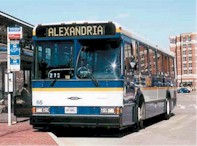at the Gazette Packet:
Alexandria Transit Company (DASH) has partnered with nearly 40 local businesses to expedite buyers throughout the holiday season. “DASHing Through Alexandria” encourages holiday shoppers to “take the bus and leave the driving to us.” The program’s goals are to help shoppers reduce holiday stress, reduce traffic congestion, and alleviate the endless search for parking, according to the transit company announcement. They believe Alexandria enjoys a competitive edge over many other area shopping venues by offering accessibility by transit.
Good for DASH! Public transit companies need to create a lot more partnerships with merchant groups and real estate developers, and execute a lot more special promotions like this. That they don’t is one of the drawbacks of the public ownership of public transit. If bus companies were privately owned, as they once were, I feel certain that they would promote their services far more aggressively and gain significantly more market share.
While the publicly owned DASH deserves praise for its initiative in this instance, the “DASHing through Alexandria” promotion reminds us what could be possible on a much larger scale.
The automobile industry spends billions of dollars annually in advertising to hype the joys of car ownership (as they have every right to do). By contrast, public transit companies are notorious for skimping on advertising and promotion. As a consequence, publicly owned transit systems fall far short of the automobile industry in validating mass transit as a viable transportation and lifestyle option.
If mass transit is to have a prayer of making a comeback in this country, it needs to be far more aggressive in packaging promotions and advertising its allures. Lovers of mass transit should think seriously about eliminating the monopolistic franchises that protect the weak public transit systems, and start thinking about ways to create strong, well-capitalized private transit companies that can compete for transportation market share.


Leave a Reply
You must be logged in to post a comment.